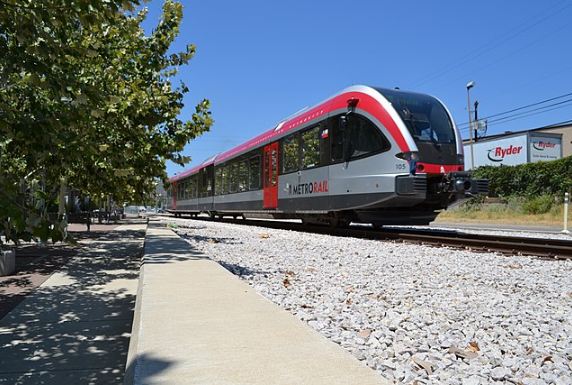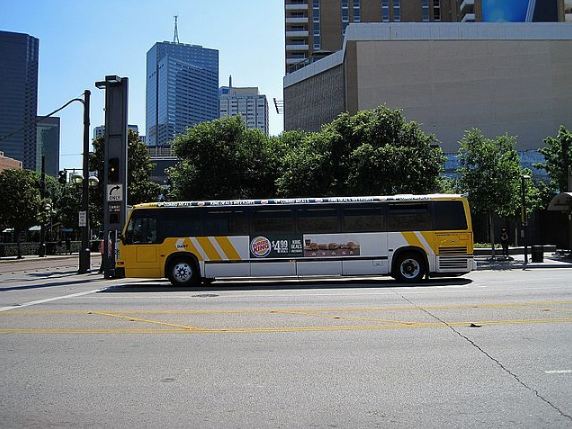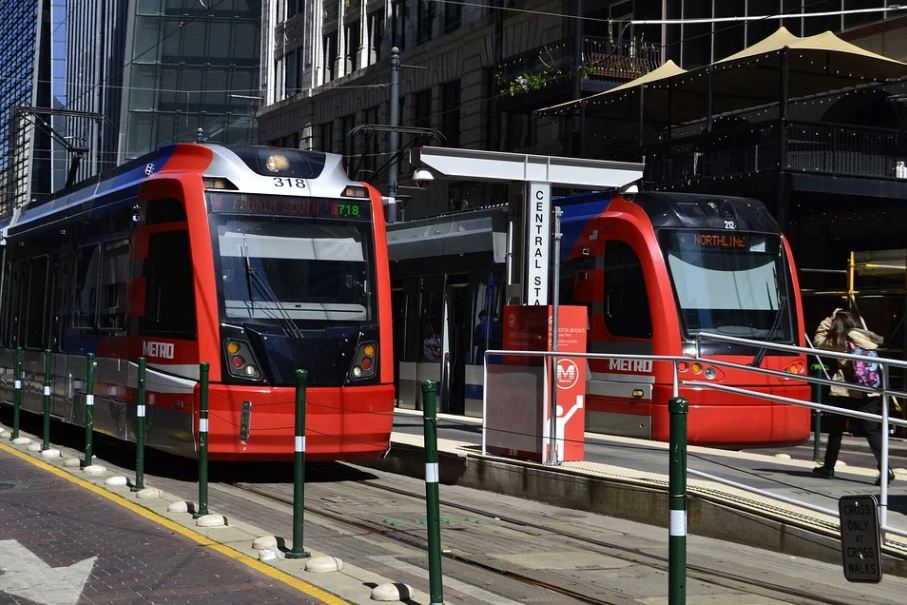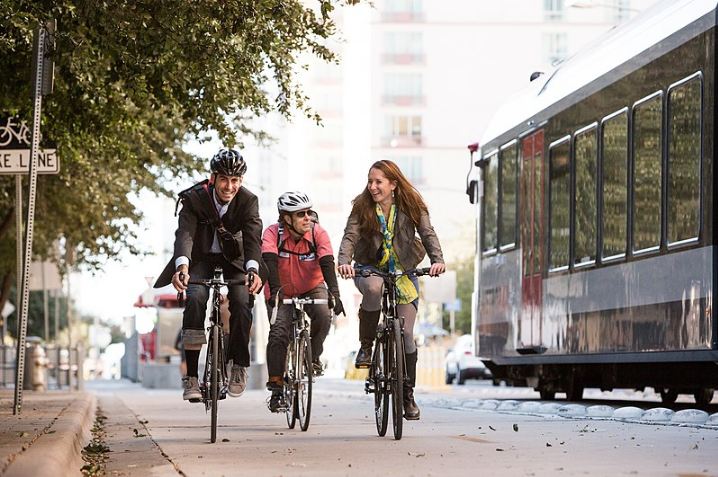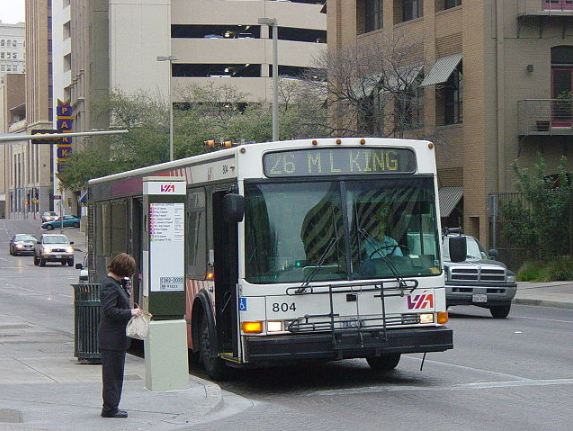Due to its size and the immense number of highway and railway systems, Texas is an important transportation hub. The Texas Department of Transportation (TxDOT) is a governmental agency that maintains the highway system and regulates public transportation systems and aviation.
There are many ways of getting around the major Texas cities – Dallas, Houston, Austin, and San Antonio – by car, train, and other modes of transportation.
Dallas
By bus and rail – The Dallas Area Rapid Transit (DART) buses and light rail serve the Dallas-Fort Worth (DFW) Metroplex. However, DART has been under-utilized as most residents prefer to get around using their own cars as it is the easiest way to explore the city and the outskirts at weekends or going on out-of-town trips during holidays.
If it’s your first time in Dallas, it’s the best time to take advantage of the DART to get around the city and nearby suburbs. Get a map at any visitor information center, hotels, and major attractions. There are single-ride fares (no transfers) with discounts for seniors, students, and children. For premium routes serving the suburbs, you can get a one-day pass for around $5 ($3 if discounted). You can purchase single tickets and day passes from the recently installed Ticket Vending Machines (TVMs) on all rail station platforms (Note: rates are subject to change without prior notice).
By taxi – If you decide to get around Dallas by taxi, don’t expect to hail one as you would in other cities (like Manhattan), as residents rarely use taxis regularly. You may find some cabs parked at the airports and in front of upscale hotels. Mostly, though, you’ll need to dial for a taxi service from companies such as Cowboy Cab Company and Yellow Checker.
By car – If you want your tours more flexible and convenient, you’d be better off driving a car. Car rental agencies have outlets at major airports and in areas throughout the DFW Metroplex. Driving around Dallas and the outlying areas (such as Fort Worth and Arlington) is easy as petrol is cheap and gas stations are plentiful.
By bicycle – Dallas isn’t particularly known as a bicycle-friendly city. But as the population has become more health- and environment-conscious, there have been demands for better cycling facilities and infrastructure. The city has added both dedicated and shared bicycle routes in selected areas. But cyclists mostly find themselves riding on the major roads and sidewalks. If you want to do some leisure cycling, though, there are many great parks and recreational areas for such activities.
Houston
By rail – METRORail is a light rail system serving Houston and is the most convenient and accessible way to explore the city. Its fast and frequent trams run on three routes:
- Red Line – It serves the Reliant Park, the Hermann Park/Rice University area, the Museum District, downtown, and Midtown.
- Purple Line – It serves the University of Houston, Texas Southern University, the Columbia Tap Trail, and the Minute Maid Park.
- Green Line – It serves the Theater District, East End, and downtown.
By bus – METRO’s bus service arm offers:
- Local service – The most common you’ll see on the city streets, stopping at every corner along its route. The one-way fare is $1.25 ($0.60 discounted). You can also get a day’s pass for $3 ($1.50 discounted).
- Park & Ride service – Designed for long-distance commuting, it provides bus service to key destinations in the service area. One-way fare ranges from $2 to $4.50, depending on the distance.
By taxi and rideshare – Houston’s local government has imposed a $6 flat cab fee for all trips in the downtown area. Yes, that’s all you will pay no matter where you’re going (it’s the best deal especially when you intend to go somewhere farther). Hail a taxi in the central business district bounded by I-45, I-10 and, Route 59.
Houston was the first Texas city to approve ridesharing services, such as Uber and Lyft. Download Uber or Lyft’s app to your smartphone and book a cab. It’s as easy as that.
(Note: fares are subject to change without notice)
By bicycle – For a quick spin around the city, Houston B-Cycle is an excellent option. Look for a B-Cycle station, pay a fare, get a bike and head off. After using it, you can return the bike to other stations. You can also download the Houston B-Cycle app to your smartphone for more helpful info.
Austin
By rail – Capital Metro operates both buses and light rail. Capital MetroRail’s 32 miles (km) of light rail connect downtown Austin and nearby suburbs. Like other forms of public transport in Austin, Capital MetroRail runs more frequently during weekdays (especially during rush hour) and more limited service during weekends. It is closed every Sunday.
By bus – Capital MetroBus provides routes covering the city and surrounding areas. As of August 2021, the service includes 82 standard routes and 15 high-frequency routes.
Due to the assortment of passes, the fares can be a bit complicated. To be sure, download the CapMetro mobile app to your smartphone to keep you abreast of the ticket pricing updates and other information. A one-way ride costs $1.25, while a day’s pass costs $2.50.
By bicycle – Compared to other Texas cities listed in this article, Austin is an ideal city for cyclists. In fact, Austin was ranked the seventh-best cycling city in America by Bicycle Magazine. The city offers several fun and elaborate trails, stocked specialist shops and rentals, and devoted cycling communities. If you’re a cycling enthusiast, you’ll feel secure in Austin as the city has laws that promote the safety of cyclists and riders of smaller forms of transportation such as scooters and skateboards.
Not surprisingly, bike-sharing is also common in the city. Download the Austin B-Cycle app to your smartphone and rent a bike for a day’s use.
By taxi and rideshare – Although cabs are pricier, they will get to your destination faster, thus saving you from many headaches. Hailing a cab in the downtown area should not be a big problem. Yellow Cab Austin, Lone Star Cab, Austin Cab Company, and Austin Taxi Co-op are some traditional taxi services you can find in the city.
As for ridesharing, Ride Austin is a nonprofit rideshare company built for services originally within Austin, but it has now extended to some suburban areas. Rates start at $0.99 per mile plus $0.25 per minute; the base fare is $1.50 plus required city fees. Ride Austin’s services go up for SUVs and luxury vehicles. Lyft and Uber are other available ridesharing options.
(Note: rates change without prior notice)
By pedicab – In Austin, bikes and pedicabs are kings. Pedicabs are familiar sights in central downtown, East Sixth Street, Rainey Street, and South Austin, especially during festivals and weekend evenings. You’d be surprised to learn that pedicab drivers are licensed and regulated by the city. You may have to negotiate the fares with the drivers or pay them by the block.
By car – For more flexibility, driving a car is a sound choice. It will also allow you to explore the best suburbs, such as Cedar Park and Leander. Car2go and Zipcar are some of the options that offer short-term car rental services in Austin.
San Antonio
By bus – VIA Metropolitan Transit is the city’s main transport network operating regular bus routes. You can get VIA passes, route maps, and bus schedules at VIA’s downtown information center.
VIA’s local fares cost $1.50 ($0.15 for a transfer). VIA’s express buses, which ply on major highways and include buses to theme parks, cost $2.60. A day’s pass will set you back at $2.75.
VIA’s newest service arm, VIVA, serves three routes that link to the city’s top attractions: VIVA Culture, VIVA Missions, and VIVA Centre. But due to the ongoing Covid-19 pandemic, as of this writing, this service is temporarily suspended.
By car – Although it’s possible to get around San Antonio without a car, there’s also no denying that the city – which is bordered by several major highways – is made for motor vehicles. Renting a car is a good option since there’s plenty of parking spaces in the city, and even downtown – which is rare for a big city. Free parking spaces are available in the residential King William District, Southtown, and VIA Ellis Alley Park & Ride.
By taxi and rideshare – Taxis and rideshares are available in San Antonio. Taxis can be usually found at airports, in front of major hotels, and at the Greyhound and Amtrak stations. Otherwise, you’ll probably call them by telephone for a cab ride from traditional taxi companies.
Lyft and Uber are the most popular ridesharing services. But if you want it local, Leep is a rideshare service specifically made for San Antonio commutes.
By bicycle – Recently, San Antonio has become more bicycle-friendly. The city launches SWell Cycle (formerly San Antonio B-Cycle and still part of the B-Cycle program) with bicycles available at B-stations throughout the city.
While San Antonio is made for bigger vehicles, many tourist- and visitor-oriented areas of the city are bike-friendly, especially the city’s river trails and downtown.

